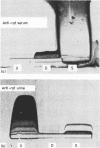Abstract
Twenty four volunteers who had been allergic to laboratory animals for some years were examined by means of a questionnaire paying particular attention to symptoms associated with rats and by serological and skin tests with extracts of rat urine (retrospective study). Nasal and eye symptoms were reported by 21 and 16 individuals respectively: 13 had asthma. Positive skin tests and high levels of specific IgE antibody to rat urine extract were found in 17 of the more severely affected individuals and this group included 12 of those with asthma. Latent periods of work with animals before symptoms appeared varied from 0.5 to 12 years. Also 148 individuals were studied during their first year of work with animals (prospective study). Symptoms developing during the year were reported by 15%, asthma by 2%. IgE antibody levels to rat urine were raised in 40% of affected and 6% of the unaffected individuals but there was no significant correlation between symptoms and either antibody levels or positive skin tests. Allergic symptoms developing during the first year of postemployment were, on the whole, much milder than those seen in the retrospective study. A tentative conclusion is that most individuals who become allergic to laboratory animals develop the condition in a mild form during their first year of employment but it appears probable that atopic individuals, although having an equal chance of developing allergy as compared with non-atopic individuals, may eventually progress to a more severe form of the disease.
Full text
PDF
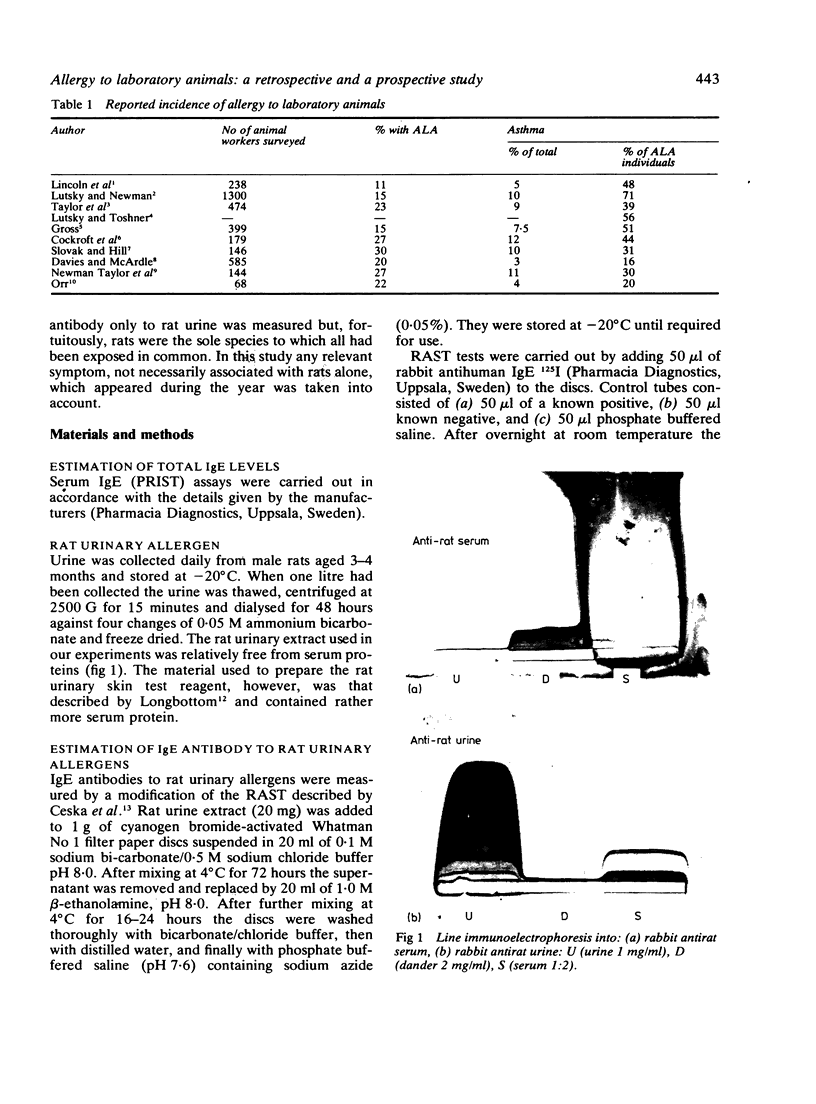

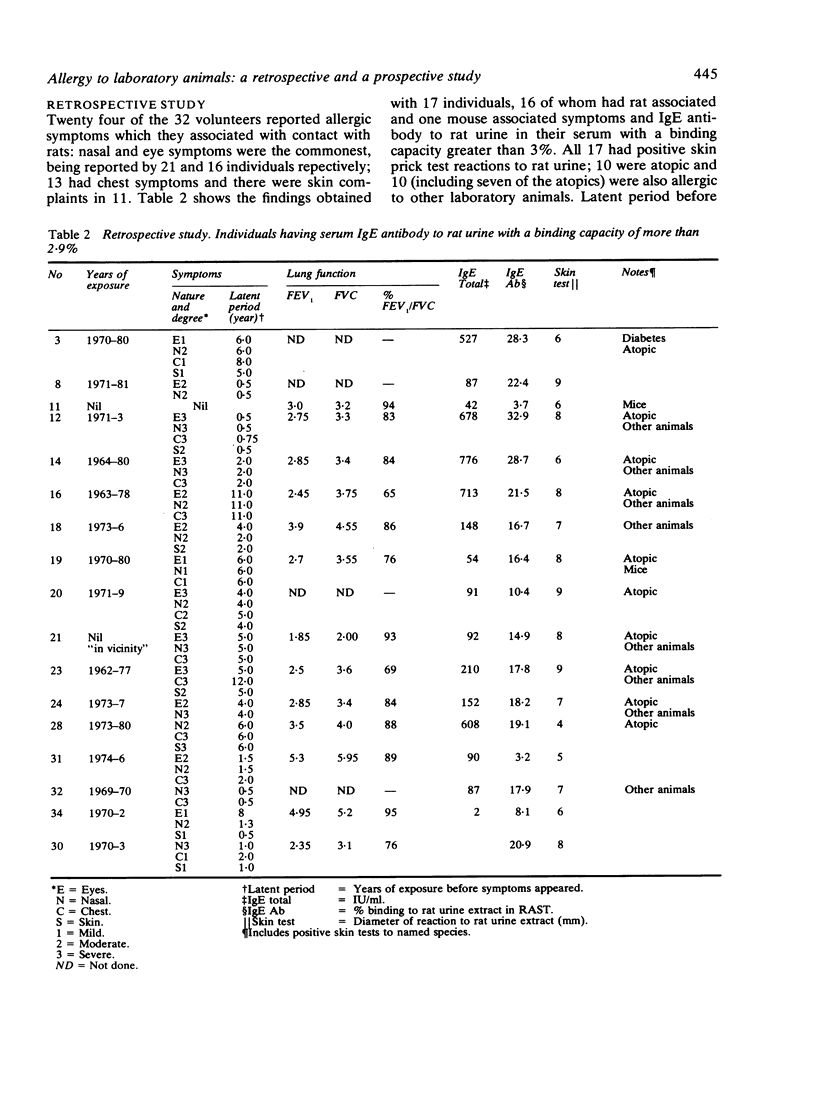
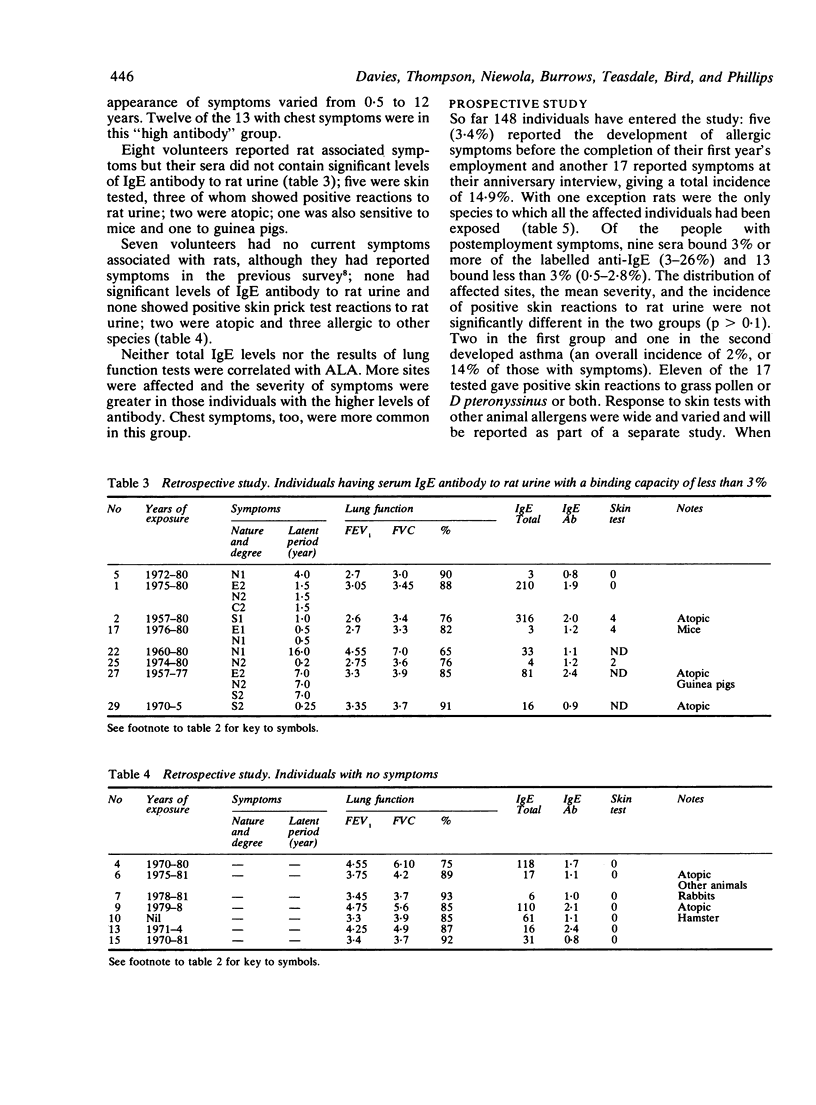
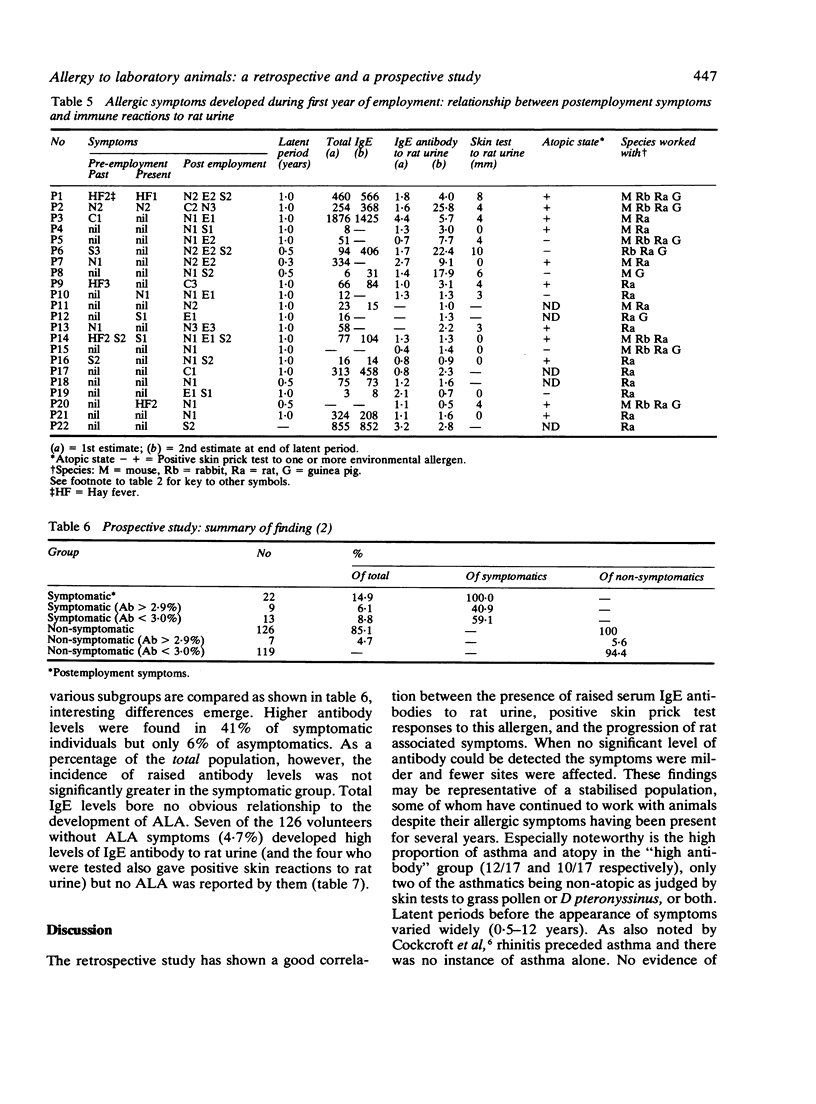
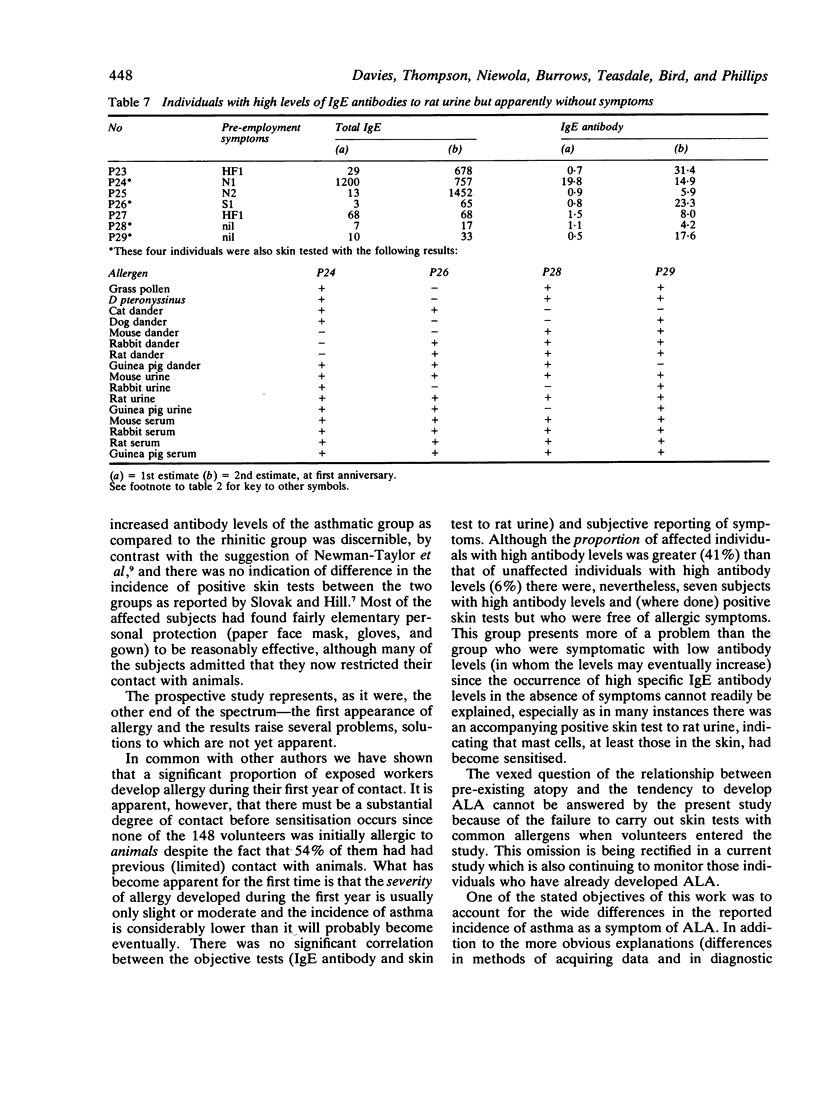
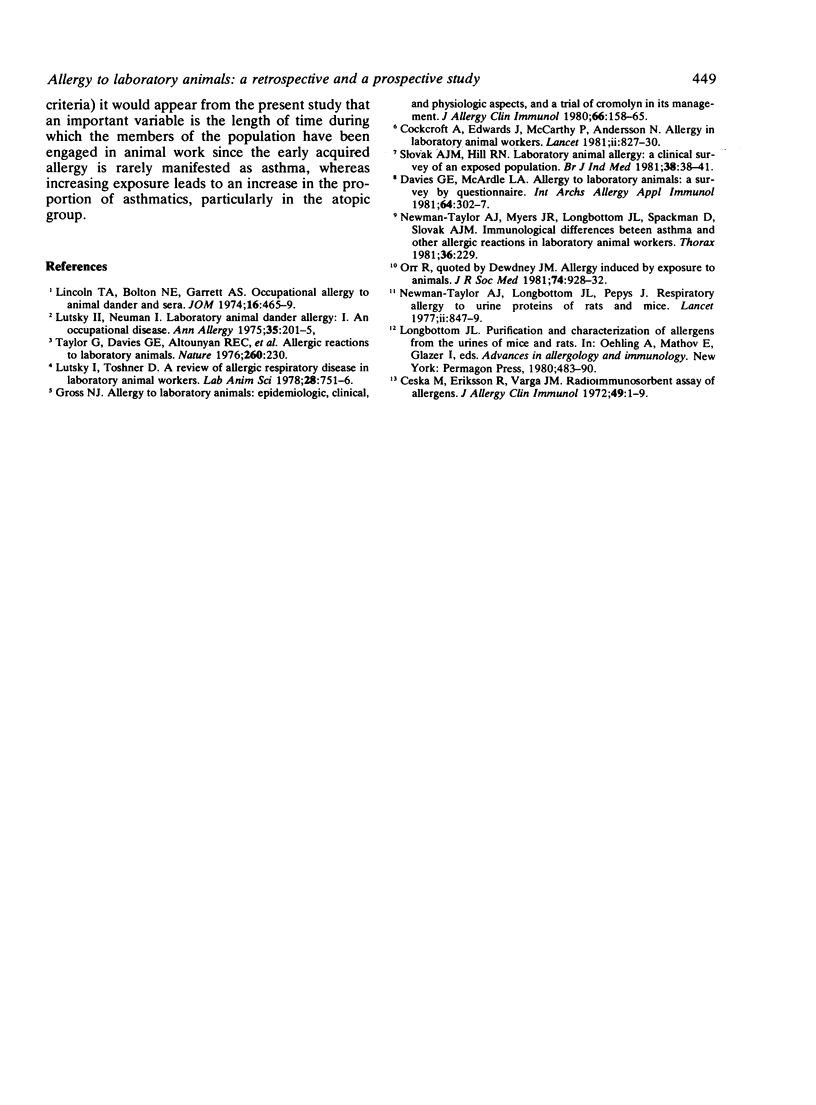
Images in this article
Selected References
These references are in PubMed. This may not be the complete list of references from this article.
- Ceska M., Eriksson R., Varga J. M. Radioimmunosorbent assay of allergens. J Allergy Clin Immunol. 1972 Jan;49(1):1–9. doi: 10.1016/0091-6749(72)90117-0. [DOI] [PubMed] [Google Scholar]
- Cockcroft A., Edwards J., McCarthy P., Andersson N. Allergy in laboratory animal workers. Lancet. 1981 Apr 11;1(8224):827–830. doi: 10.1016/s0140-6736(81)92693-3. [DOI] [PubMed] [Google Scholar]
- Davies G. E., McArdle L. A. Allergy to laboratory animals: a survey by questionnaire. Int Arch Allergy Appl Immunol. 1981;64(3):302–307. doi: 10.1159/000232707. [DOI] [PubMed] [Google Scholar]
- Gross N. J. Allergy to laboratory animals: epidemiologic, clinical, and physiologic aspects, and a trial of cromolyn in its management. J Allergy Clin Immunol. 1980 Aug;66(2):158–165. doi: 10.1016/0091-6749(80)90064-0. [DOI] [PubMed] [Google Scholar]
- Lincoln T. A., Bolton N. E., Garrett A. S., Jr Occupational allergy to animal dander and sera. J Occup Med. 1974 Jul;16(7):465–469. [PubMed] [Google Scholar]
- Lutsky I. I., Neuman I. Laboratory animal dander allergy: I. An occupational disease. Ann Allergy. 1975 Oct;35(4):201–205. [PubMed] [Google Scholar]
- Lutsky I., Toshner D. A review of allergic respiratory disease in laboratory animal workers. Lab Anim Sci. 1978 Dec;28(6):751–756. [PubMed] [Google Scholar]
- Slovak A. J., Hill R. N. Laboratory animal allergy: a clinical survey of an exposed population. Br J Ind Med. 1981 Feb;38(1):38–41. doi: 10.1136/oem.38.1.38. [DOI] [PMC free article] [PubMed] [Google Scholar]
- Taylor A. N., Longbottom J. L., Pepys J. Respiratory allergy to urine proteins of rats and mice. Lancet. 1977 Oct 22;2(8043):847–849. doi: 10.1016/s0140-6736(77)90783-8. [DOI] [PubMed] [Google Scholar]



